Methods of Relative (Indirect) Age Determination used in Archaeology : Part 2
Methods of Relative (Indirect) Age Determination used in Archaeology : Part 2
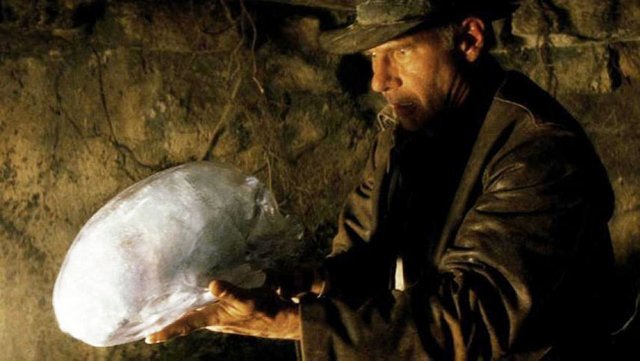
Typology, Technology and Relative Chronology
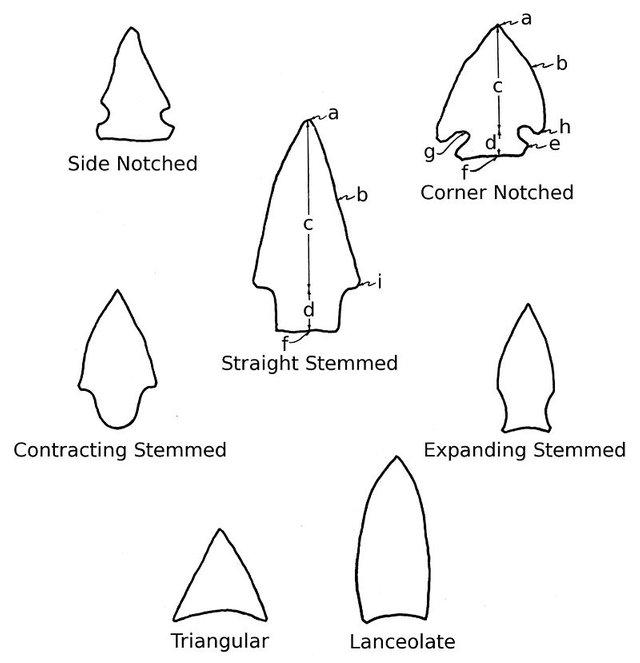
We can determine the relative age of objects by comparing the different types in terms of certain technical criteria. The underlying principle is usually that all forms of technical criteria. The underlying principle is usually that all forms of technical proficiency are subject to an evolutionary process of development. This basic principle has been applied in the chronological grouping of stone implements, metal implements and equipment, pottery, etcetera.

Image Source
A typical example is the metal axe of the European Bronze Age. Each form is regarded as being typical of a certain period. An axe which has not already been classified in this series according to stratigraphical criteria, would be allotted to the period of the prototype which it most resembles.
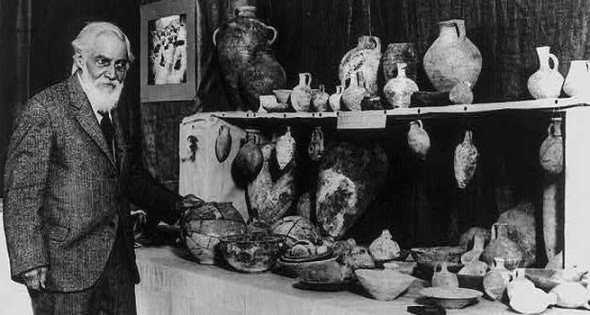
Sir Flinders Petrie
Similar typo-logical series have also been complied for pottery. An exceptionally good example of the typo-logical arrangement of pottery is the system which Sir Flinders Petrie worked out for the pottery of Pre- historic Egypt. Since there was no stratification, he could not arrange in chronological sequence the graves where the pottery had been found. He mixed the pottery from the different graves, he then arrange the different pots and jars on an evolutionary sequence according to different criteria such as general form, handle, color and ornamentation. He classified certain types having what is known as a wave handle as older forms, and those that possessed the wave handle as an ornament only were classified as more recent forms. In this way he could arrange the pottery into a typo-logical sequence,,in other words, put in the pieces in a relative chronology.
This type of classification is known as sequence dating or seriation. It is often used today, in a modified form, when no stratigraphic arrangement can be made.
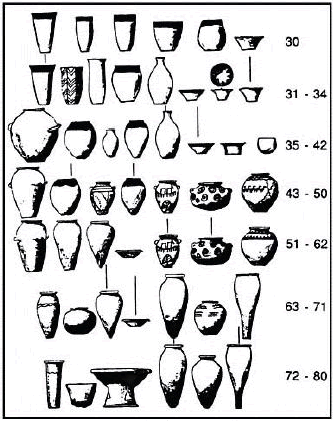
The typo-logical method also plays an important part in the determination of the chronological sequence of stone implements complexes. Here, of course, typo-logical criteria are few, consisting for all practical purposes in the form and technique of manufacture only. The early classification made of the European Stone Age (especially that of France) is largely based on the refined forms as being of more recent origin (evolutionary principle).
Although the typological method has several defects, it may be the only possible method which can be used for the chronological arrangement of material. Its usefulness depends on the circumstances of each case, but the possibility that errors will creep in is present to a certain extent. The objection usually raised against this method is that the principle of evolutionary development plays a part - consciously or unconsciously - in most cases. It is a well - known fact, however, that the development of technical proficiency may be reversed, that is to say the material could, theoretically speaking, be arrangd in different ways.
Today, therefore, the typo-logical method of ascertaining relative chronology is regarded as being fairly accurate only in cases where the relative chronology is supported by the evidence afforded by stratification and associated finds.
Associated finds as an aid in the determination of relative chronology
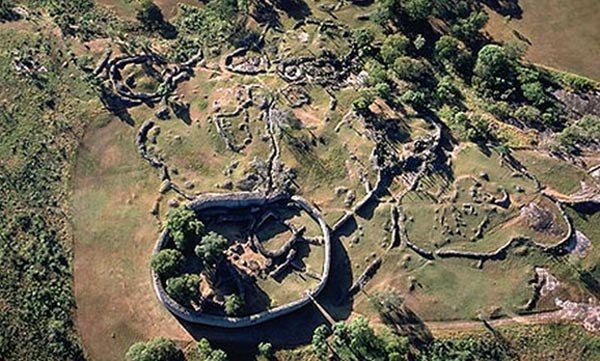
Great Zimbabwe
The term "associated finds" refers to material cultural objects which are culturally alien to a particular complex and finds of an organic nature. As an example of the determination of relative chronology through the study of cultural objects, we may mention the dating of Great Zimbabwe. Here both the glass beads and the porcelain were imported objects of which the approximate age was known.

Associated finds in the form of hoards play a very important part in the determination of the chronology of the European Bronze Age. By "hoards" we mean collections of material objects that have been found in graves or other places where they must have been concealed for safe preservation. Sometimes a collection of this type will include objects which were probably imports from the Near East or imitations of such imports. If it is known how long ago people began to manufacture these articles in their native land, then their presence in Europe will make it possible to determine a terminus post quem (a date after which) for the age of such a collection. The relative chronology of the early cultures of the Near East and the determination of the cultural link that existed between the Near East and Europe through the ages are based on associated finds of this kind.
Associated such as bones of animals help to determine relative age, especially the relative age of the stone implement complexes of the Pleistocene. With the aid of these finds, stone implements are correlated with climatic changes within the framework of the relative chronology of the Pleistocene. Today, however, this procedure is regarded as rather untrustworthy, because the Pleistocene lasted for a very short time (in comparison with other geological periods) and there is no species which characteristics one climatic phase alone.
Requirements for associated finds:
The main requirement is that the association must be genuine, that is to say the associated finds must not have been added at a later date. This could easily have happened in graves. When examining graves we should always remember that they intersect layers which lie well below the earth's surface. When the grave is being dug or filled in, the ground, as well as the artefacts contained in the deposit are disturbed. As a result, objects which really belong to the grave to the grave will often be found in circumstances which make it seem that they are associated with articles found in the deeper layers.
Weathering and Patina as criteria of age.
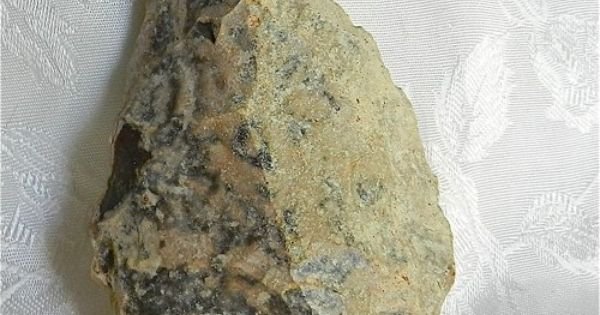
Weathering and patina are sometimes used as criteria in the determination of relative age, and the relative age of stone implements in particular. This method is specially useful when quantities of some implements are found on the surface which show distinct traces of mechanical weathering (eg: rolling, cracking or weathering by wind) and chemical weathering (patination).
This method can be applied only when a fairly large number of stone implements are available and when definite variations in the manufacturing technique are encountered, in other words this method can be employed only if typo-logical criteria are also taken into consideration. Since the extent to which mechanical and chemical weathering take place depends not only on many different factors, which vary from place to place, but also on the stone material itself, it can be said that this single factor (weathering) is not in itself an adequate criterion.
Various researches have tried experimentally to calculate the speed at which chemical weathering takes place so as to establish the absolute age of stone implements by the thickness of the patina. (Patina refers to the outer surface of an artefact which may differ in color or texture from the inner part of the object owing to chemical alteration).At the moment their conclusions are regarded as untrustworthy, because it is impossible to pay adequate attention to all the factors which play a part in experiments of this kind.
Generally speaking, the results obtained by this dating method are regarded as trustworthy only when the relative sequence of similar implement complexes has already been determined by stratigraphy and association elsewhere.
Part 3 to follow ......
Please Follow me for more on Archaeology and History.
Please check out my other posts:
Methods of Relative (Indirect) Age Determination used in Archaeology : Part 1 - Introduction
The Preservation of an Archaeological Site : Part 2
The Preservation of an Archaeological Site : Part 1
Discovering your own Archaeological Site : Part 3
Discovering your own Archaeological Site : Part 2
Discovering your own Archaeological Site : Part 1
Archaeological Sealed Sites and River Deposits : Is it an Archaeological Site or Not? - Part 3
Caves, Rock Shelters and Larger Open-Air Sites : Is it an Archaeological Site or Not? - Part 2
Is it an Archaeological Site or Not? - Part 1
Understanding the Archaeological Record : The Aims and Subject Matter of Archaeology - Part 2
The Aims and Subject Matter of Archaeology - Part 1
Archaeology and the Natural Sciences
Introduction to Ethnographic Analogy and Ethnoarchaeology
The Nature and Scope of Archaeology
The Three - Age System : The Stone Age, The Bronze Age and The Iron Age
The Roots of Modern Archaeology
Significant 18th and 19th Centuries Discoveries in Archaeology
Archaeology as a Profession- Part 2
Archaeology as a Profession- Part 1
To Become or Not Become an Archaeologist? - Introduction to Archaeology Part 2
Please Upvote and Resteem.
Thank You!
Sup, zest met you at the chat. Nice fucking long series on archaeology you have going around here.
Hi @ertwro, Much appreciated!!!! Thank you for the support and comment.
You have a very interesting blog @zest. I'll be following and reading others as well, but first i'm gonna share this gem of yours in my blog. #Archaeology.
Hi @steemitdigest. Thank you so much, I am grateful to you for your support, recognition and recommendation of my post.
This post has received a 6.25 % upvote from @buildawhale thanks to: @trumpman. Send 0.100 or more SBD to @buildawhale with a post link in the memo field to bid on the next vote.
To support our curation initiative, please vote on my owner, @themarkymark, as a Steem Witness
Hi @trumpman. You are truly a generous soul. Thank you so much for the support!!!
don't mention it. My upvote doesn't count for much yet, so instead I send a bot to posts I like. Instead of thanking me, keep writing good stuff like this, ok ? :P
That old guy in the pic looks really creepy...
hahahahha
Thanks again for this post. I hope you have a WONDERFUL DAY! Following YOU!!
Wow @zest! There is a lot of information here. Phew ... It is incredible though, I like visiting museums, and just recently I have been to one where I saw a LOT of pottery and tools. One just never imagines how much work it goes into putting all the artifacts in a chronological order. It makes me appreciate it all even more!
It is great how you make all this info so straightforward!
Best :)
Hi @abigail-dantes, Thank you so much for the great comment. The life of an archaeologist is a life that has to be based on passion as we chatted about. The time and effort put it don't always bring rewards of treasure but more of a greater understanding of culture. I really appreciate your support!